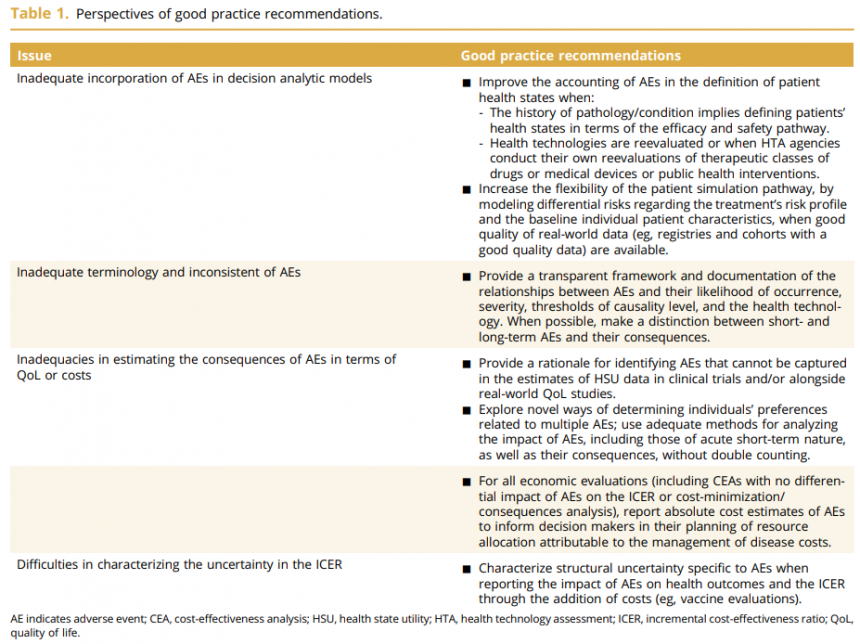That is the title of a comprehensive review paper authored by Salah Ghabri, Dalia Dawoud, and Michael Drummond. The paper addresses the lack of standardization in the incorporation of adverse events (AEs) into economic models but offers useful guidance. It delves into ways to include AEs in economic decision models, the types of AEs to consider, estimating their impact on costs and quality of life (QoL), and exploring uncertainty surrounding their influence on the incremental cost-effectiveness ratio (ICER).
Key points discussed in the paper include:
1. Ways to incorporate AEs into economic models:
- Integration into the analytic model structure, such as setting AEs as a separate health state.
- Incorporating AE input parameters into each health state.
2. Terminology and types of AEs to be included:
AEs may be referred to with various terms, with chronic and acute AEs being key differentiators. Real-world data can supplement clinical trial findings, especially for medical devices.
3. Estimation of AE Impact on QoL and Costs:
Methods for estimating the impact of AEs on quality of life, including utility decrements, are discussed. Challenges include estimating utility decrements and assessing the frequency and duration of AEs.
4. Uncertainty around impact of AEs on ICER:
Scenario analyses around AEs are infrequently conducted, despite their potential impact on long-term health outcomes. Best practices are suggested to address these challenges.
The article offers valuable insights for researchers working on economic evaluations. To access the full paper, click here.





